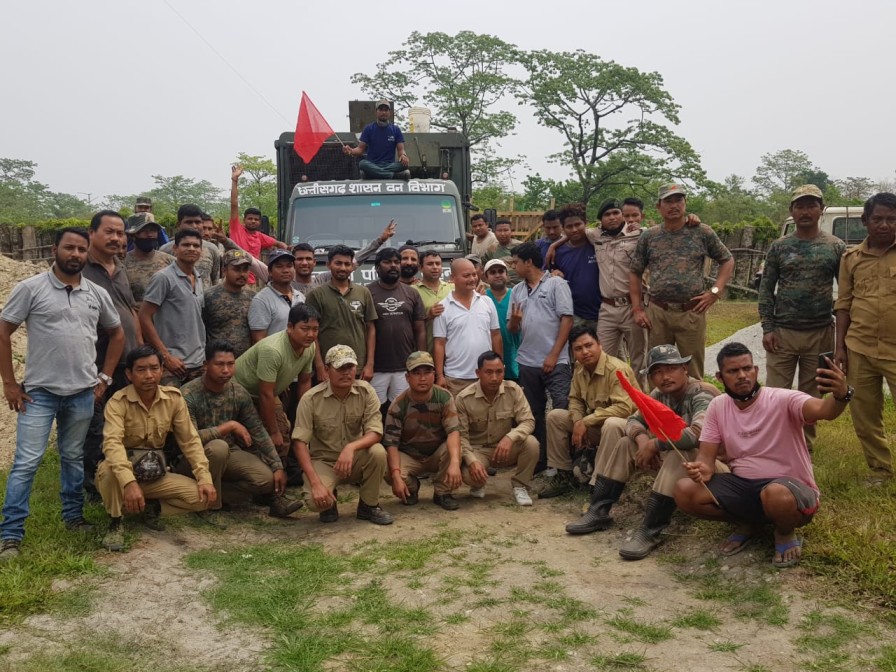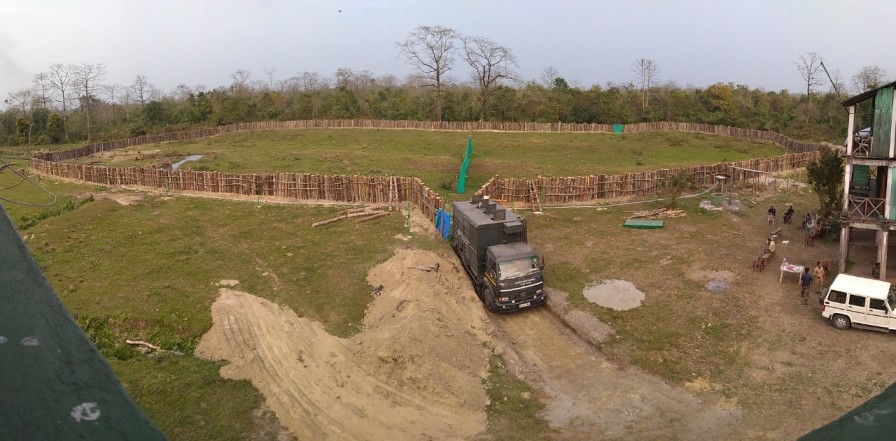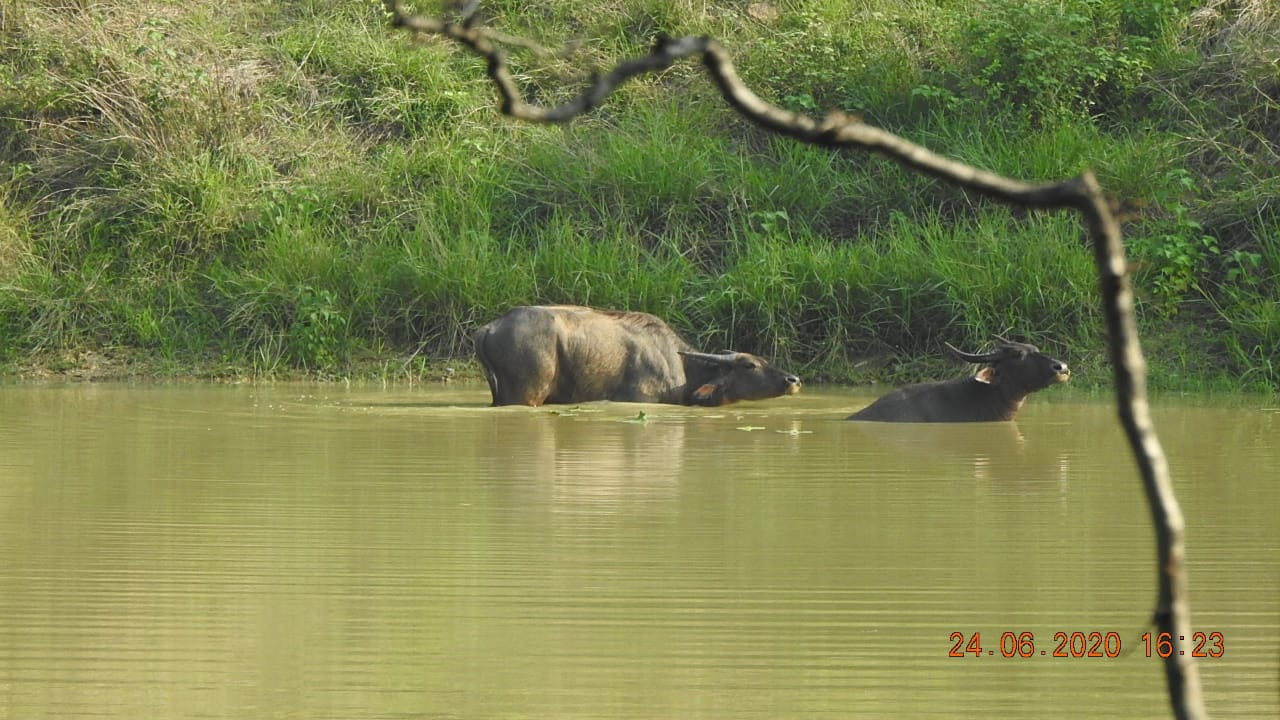How Do You Move 2 Wild Buffaloes 1900 Km During Lockdown? These Officers Did It!
To save the endangered state animal of Chhattisgarh, a daunting 4-day road trip of 1900 kilometres was embarked upon, traversing state borders.

It all started with a phone call that took IFS officers, Arun Kumar Pandey, Vishnuraj Nair and their team on a one-of-a-kind mission. Amidst the scare of a deadly virus outbreak, a devoted team of Indian Forest Service officials, forest guards and veterinary doctors embarked on a journey of translocating endangered wild buffaloes across state borders. To restore the population of the state animal of Chhattisgarh, the team travelled four days, and 38 hours non-stop in the final stretch, to transport two wild buffaloes, weighing 1200 kilos.
Vishnuraj, posted at Achanakmar-Amarkantak Biosphere Reserve, Bilaspur, was one of the co-ordinators of this daunting feat of a 1900 kilometre journey during the lockdown. It was recorded as the longest ever translocation of wild animals in the country within four days by the Wildlife Trust of India (WTI). Meanwhile, Arun, Additional Principal Chief Conservator of Forest (APCCF) Wildlife played a critical role in securing permissions from different states.
“Years ago there were around 50 wild buffaloes, as per WTI, in Indravati National Park, Pamed and Udanti Wildlife Sanctuaries in Chhattisgarh. However, a recent count was only done in Udanti as the other two are Naxal-hit areas. So, as per the information, there are only nine remaining, of which only one is a female. Thus, translocation from Assam, which has nearly 4000 buffaloes, was a feasible option to save the bovine species,” Vishnuraj tells The Better India.

It was Chhattisgarh’s former Principal Chief Conservator of Forests (CCF) Atul Shukla, and Additional Principal CCF S K Singh’s idea to translocate the state’s national animal from Assam. The Chhattisgarh state government had earlier initiated the project to bring wild bovines from Manas National Park in Assam to the Conservation Breeding Centre in Barnawapara in Chhattisgarh between 10 February and 18 April.
The mission was carried out in collaboration with a thirteen-member team of the Chhattisgarh forest department, WTI team and a special team of biologists and veterinarians from the Assam Forest Department.
Behind The Scenes of The Buffaloes Trip

The plan was to first establish a temporary location inside the national park for six buffaloes, one that had its own water pond. The shelter was made to capture the buffaloes in an uncomplicated and swift manner.
Special trucks were designed to accommodate two buffaloes per truck, which also had internal compartments and facilities like sprinklers, drinking water, air conditioner and overhead tanks.
Vishnuraj along with his team of veterinary doctors, forest guards, biologists and caretakers reached the Assam national park in the first week of February.
Despite all the detailed plans and preparations to transport the buffaloes, the real challenge was to capture them since they can detect human presence from as far away as 100 metres.
“If they sense humans, they start running and it’s difficult to gain control. Our men tried everything from sitting atop trees to mitigating their fears for four to five days. We even used elephants and to get nearer to them. In the end, we were able to capture only two buffaloes named Mansi and Mansa,” says Arun.
However, just before the animals were to be transported in the customised trucks, a nationwide lockdown was imposed on 24 March. Till April, the team patiently waited for relaxations but to no avail.
With so many restrictions and complete shutdown of movement in some areas, the team chalked out a plan that would take the vehicles through West Bengal, Odisha and Jharkhand.
“Buffaloes can get restless when kept enclosed in a truck so we had to ensure the pace of the journey was kept fast and short. Although we had experts who knew how to control them, we did not want to take any risk. At one point we were denied permission but our enthusiastic team backed the mission and assured success,” says Vishnuraj.
After Arun acquired the necessary permits, the team finally left Assam on 15 April with cooking provisions for the long, arduous journey.
The first stop was in Siliguri followed by Panagarh in West Bengal. On their third day, the team stopped to prepare food in Odisha. When they reached Chhattisgarh, they were denied permission to take any halts, and so the last 38 hours saw even the doctors taking turns to drive. Finally, they reached the Barnawapara Wildlife Sanctuary in Baloda Bazar district on 18 April.
The wild buffaloes were quarantined into the artificially created holding facility for the 14 days post which they were sent to the 10-hectare enclosure.
“The two wild buffaloes have been successfully translocated and are completely healthy. We will soon initiate a similar project to bring four female wild buffaloes in the next phase” says Dr Rajendra Prasad Mishra, Coordinator in Species Recovery Division, WTI.
Edited by Yoshita Rao
If you found our stories insightful, informative, or even just enjoyable, we invite you to consider making a voluntary payment to support the work we do at The Better India. Your contribution helps us continue producing quality content that educates, inspires, and drives positive change.
Choose one of the payment options below for your contribution-
By paying for the stories you value, you directly contribute to sustaining our efforts focused on making a difference in the world. Together, let’s ensure that impactful stories continue to be told and shared, enriching lives and communities alike.
Thank you for your support. Here are some frequently asked questions you might find helpful to know why you are contributing?


This story made me
-
97
-
121
-
89
-
167













